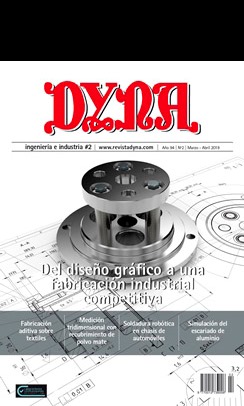ADDITIVE MANUFACTURING ON TEXTILES WITH LOW-COST EXTRUSION DEVICES: ADHESION AND DEFORMATION PROPERTIES
Keywords:
Additive manufacturing, 3D printing, Textiles, Extrusion, Fabricación aditiva, impresión 3D, Extrusión.Abstract
Additive Manufacturing devices or 3D printers allow the possibility of creating almost anything. One of the most promising fields of application is wearables, which can be directly printed on textiles. This paper aims to study adhesion forces and warping effects when depositing a polymer onto a textile with a low-cost extrusion 3D printer. To achieve this, two different polymers (PLA and Filaflex) and six of the most common textile materials were selected. L-shaped specimens were printed by combining the two polymers and the six textiles. Most of the common printing settings were fixed for both materials, while the layer quality was 0.1 mm and 0.2 mm. Once printed, they were inspected with a Coordinate Measuring Machine and the deformation of each specimen was quantified by calculating their maximum and minimum dis-placements. Afterwards, each specimen was axially tested to evaluate the adhesion forces between the polymer and the textile. In terms of warping, flexible filament showed the lowest values independent of printing quality (0.56 mm and 0.3 mm) relative to the rigid filament (0.73 mm and 0.8 mm). In terms of adhesion, the combination of a porous textile and a flexible filament got the highest values, regardless of the layer height selected. The conclusion of this study is that polymer textile deposition can be a real manufacturing strategy that should be considered when thinking about the design of a wearable device to be worn on the body. Keywords: Additive manufacturing, 3D printing, Textiles, Extrusion.Downloads
Published
2019-03-01
Issue
Section
ARTICULOS

